

Daylilies In L.A.
Los Angeles, California
If you are curious about
beautiful daylilies, then this site is for you. Additionally, there is local information for anyone in or near the Los Angeles area. In particular, the Daylily Display Garden page has many images of cultivars flourishing at the Los Angeles Arboretum. There is also a page with information about the local club and the annual daylily show where gardeners from near and far compete for ribbons. Dayliles are among the hardiest and easiest plants to grow, giving gardens lush results with very little effort.
Daylilies(Hemerocallis) have rapidly transformed in recent years due to modern hybridization, and they have advanced far beyond the ditch lilies growing wild on the road side. In the past, the flower appearance was minimal at best; however today, the modern daylily is available in a myriad of sizes, interesting shapes and beautiful colors. Some are quite extravagant while others have a more demure appearance. There are enough varieties to suit everyone's garden taste and needs.
Because daylilies are one of the easiest plants to grow, they have the reputation of being America's favorite perennial. Honestly, a green thumb is not required.
This site has lots of colorful pictures and even a few informational videos. There's plenty of info that everyone can benefit from. So, take a look around and enjoy!
Daylilies(Hemerocallis) have rapidly transformed in recent years due to modern hybridization, and they have advanced far beyond the ditch lilies growing wild on the road side. In the past, the flower appearance was minimal at best; however today, the modern daylily is available in a myriad of sizes, interesting shapes and beautiful colors. Some are quite extravagant while others have a more demure appearance. There are enough varieties to suit everyone's garden taste and needs.
Because daylilies are one of the easiest plants to grow, they have the reputation of being America's favorite perennial. Honestly, a green thumb is not required.
This site has lots of colorful pictures and even a few informational videos. There's plenty of info that everyone can benefit from. So, take a look around and enjoy!

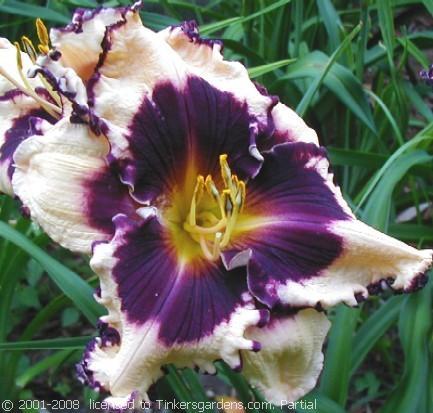
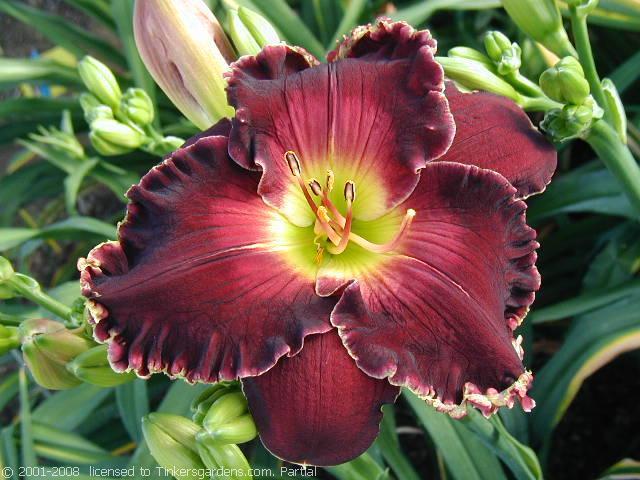
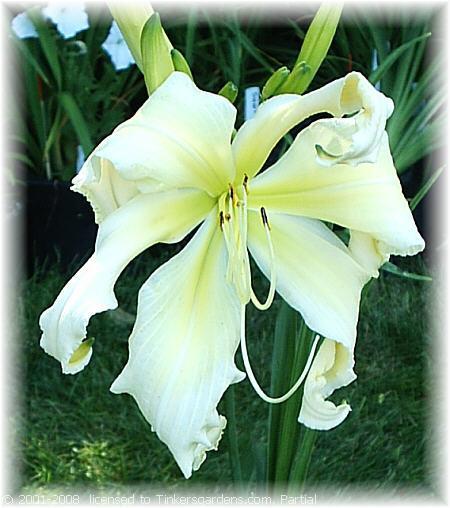
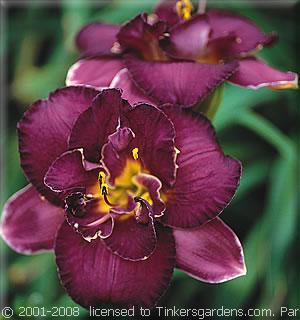
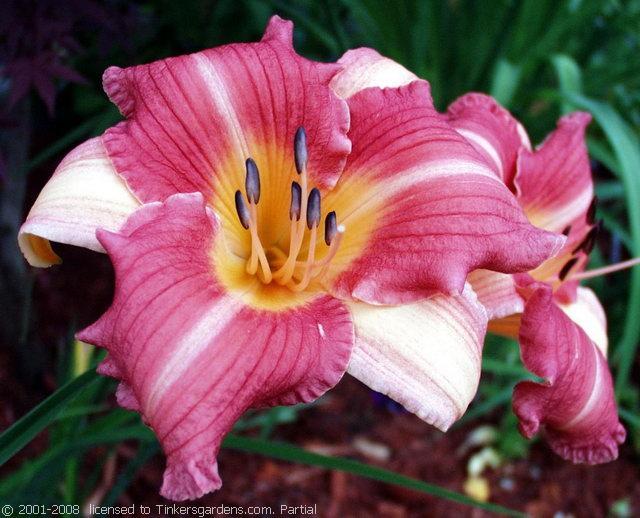
H."Born to Reign"
H."Sabine Baur"
H."Heavenly Curls"
H. "Mulberry Truffle"
H. "Karen Sue"
Photos courtesy of
Tinker's Gardens

Copyright © 2008 - 2016 DAYLILIES IN L.A.
All Rights Reserved.
.
All Rights Reserved.
.







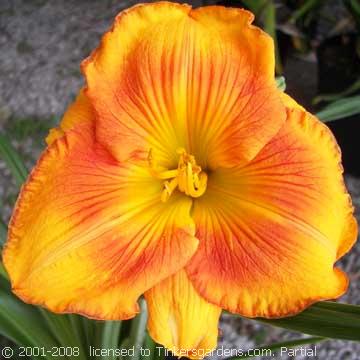
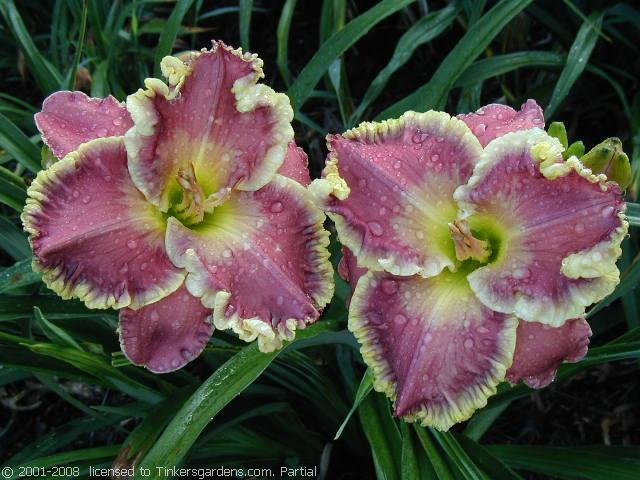
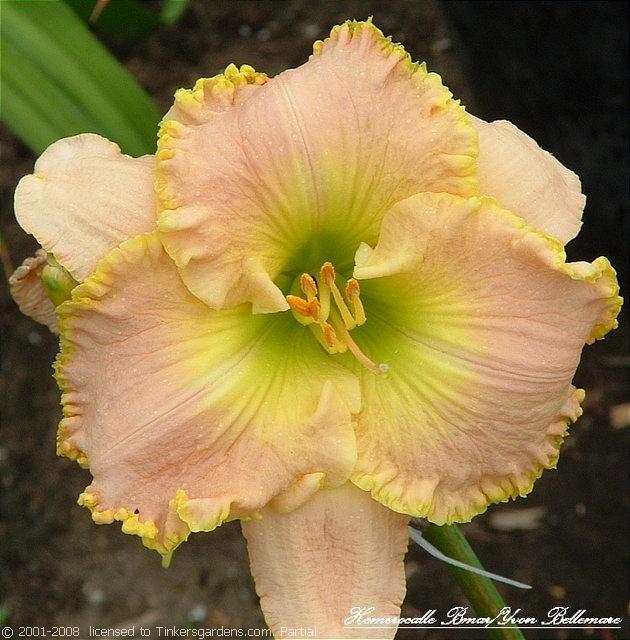
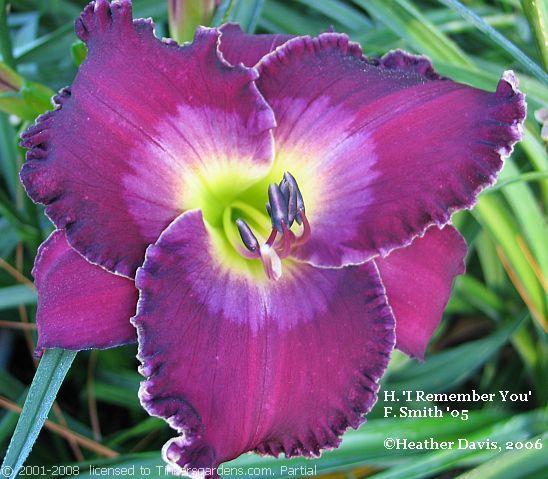
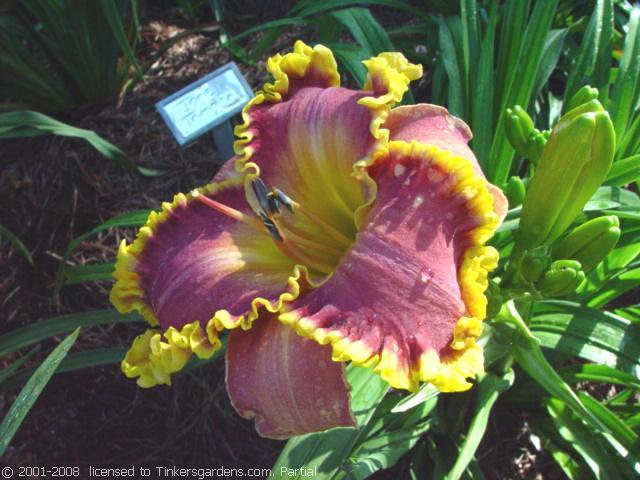
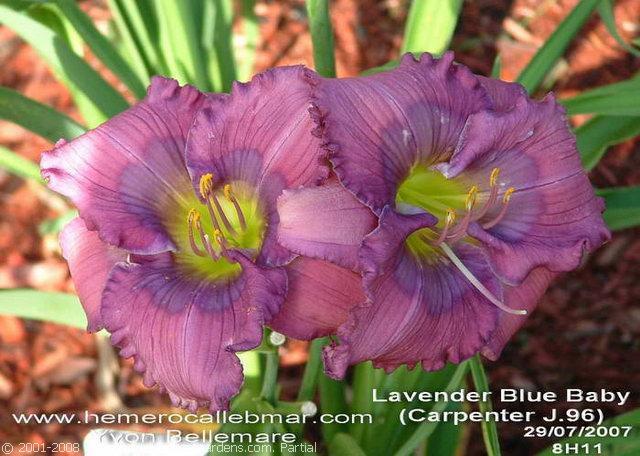
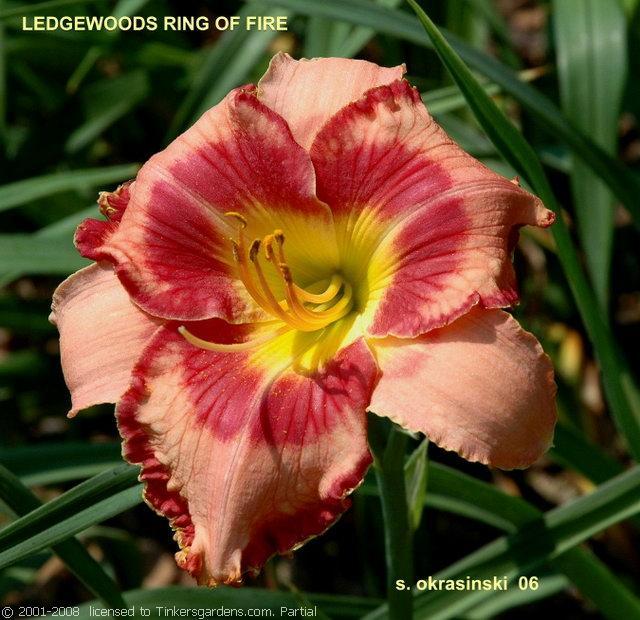
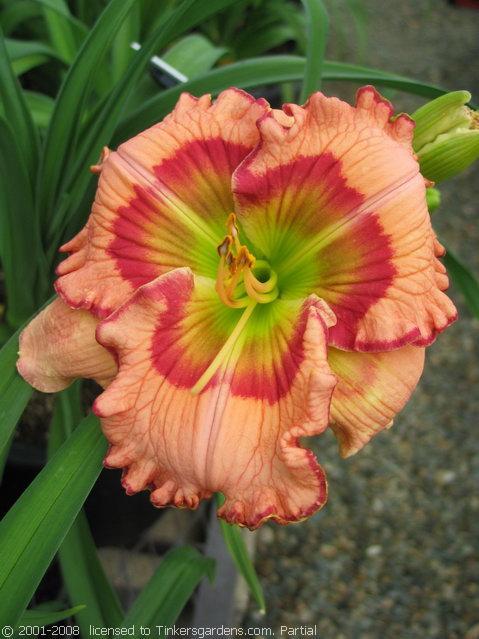
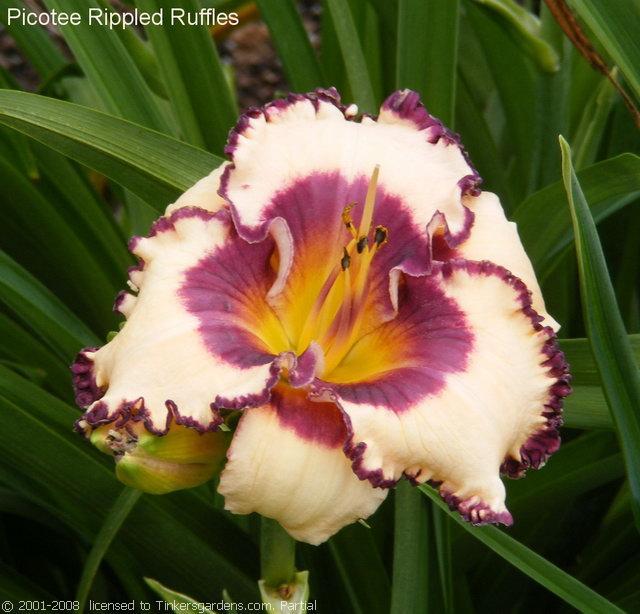
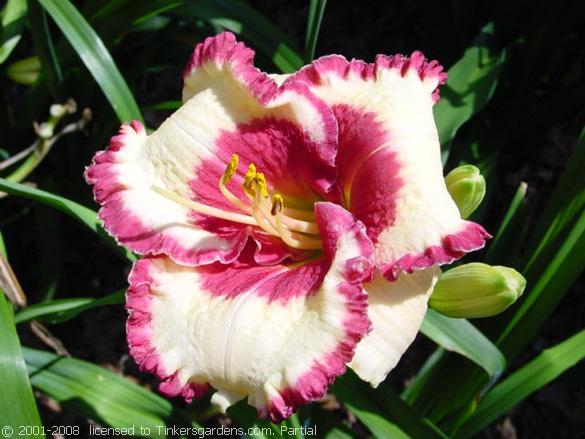
DAYLILY FORMS
H. "Heartbeat of Heaven"
H. "Ed Brown"
2006 Stout Silver Medal
2006 Stout Silver Medal

H. "Raspberries in Cream"
H. "Ledgewood's Ring of Fire"
H. "Jerry Nettles"
Daylily Edges
The edge or picotee of a daylily flower refers to the outer perimeter of the daylily's petals and sepals. The edging structure can be ruffled, knobbed, fringed, etc. It can also be a different color. For more info and examples on edges go HERE.
The edge or picotee of a daylily flower refers to the outer perimeter of the daylily's petals and sepals. The edging structure can be ruffled, knobbed, fringed, etc. It can also be a different color. For more info and examples on edges go HERE.

H. "CITRIX"
H. "Parrot Jungle"

H. "Lavender Blue Baby"
2007 Stout Silver Medal
2007 Stout Silver Medal
H. "Picotee Rippled Ruffles"
H. "I Remember You"
DAYLILY EYEZONES & WATERMARKS
The eye or eyezone of a daylily flower is the darker area above the flower's throat on the petals and sepals. For more info and examples of eyes go HERE. Additionally, the AHS describes the watermark of a daylily flower is the lighter color/tone above the flower's throat on the petals and sepals. For more info and an example of a watermark go HERE.
The eye or eyezone of a daylily flower is the darker area above the flower's throat on the petals and sepals. For more info and examples of eyes go HERE. Additionally, the AHS describes the watermark of a daylily flower is the lighter color/tone above the flower's throat on the petals and sepals. For more info and an example of a watermark go HERE.

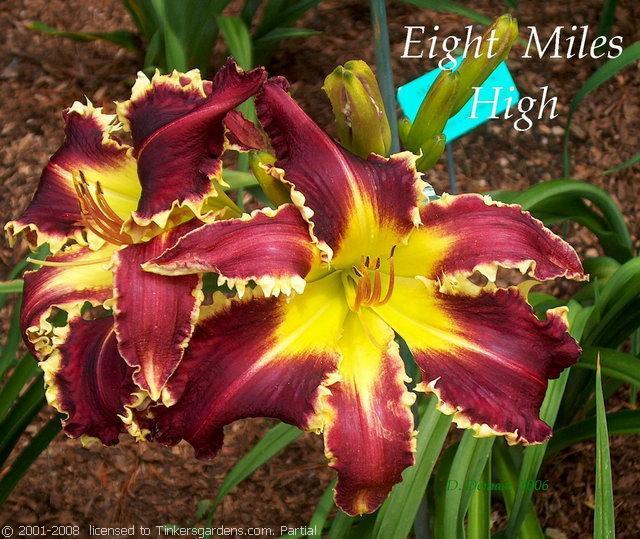
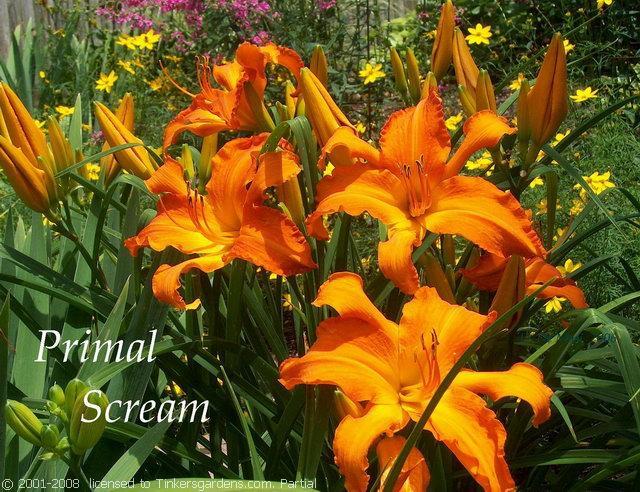
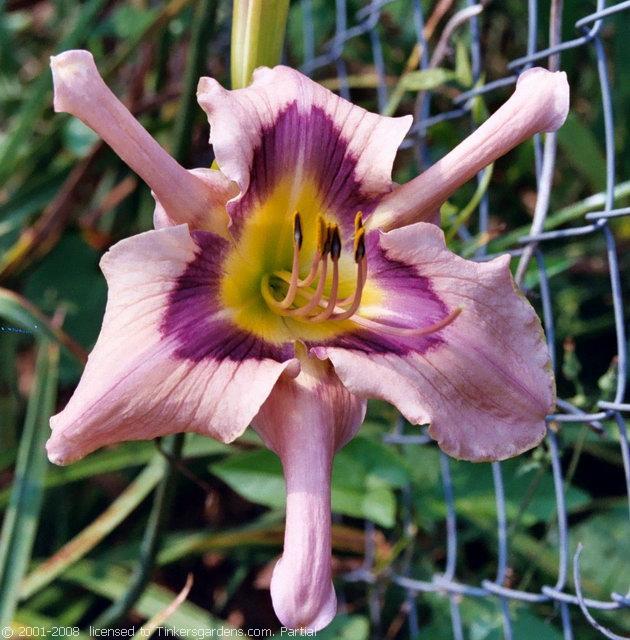
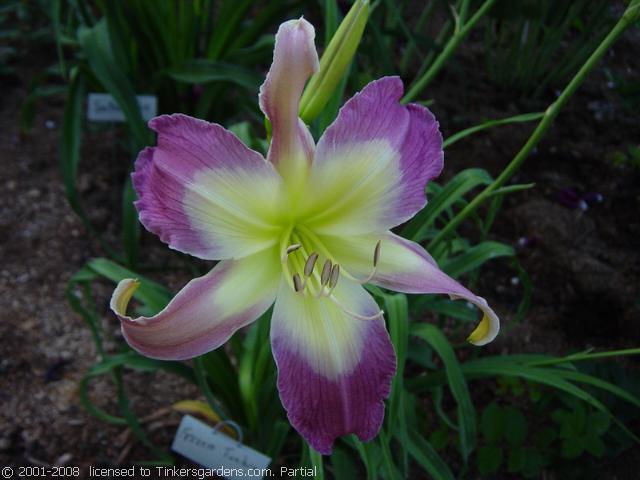
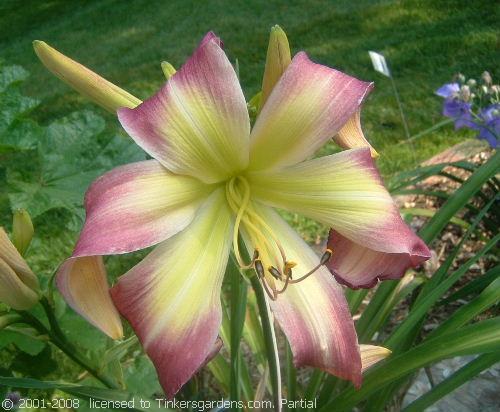
H. "Eight Miles High"
H."Ringo"s Star"

H. "Primal Scream"
2003 Silver Stout Medal
2003 Silver Stout Medal
H. "Frozen Tundra"
H. "Wilson Spider"
Daylily Spiders & Unusual Forms (UFO)
Spider forms of the daylily must have a petal length four times the petal's width or more, a ratio of 4.0:1. Additionally, an unusual form exhibits unusual form characteristics on at least three petals or three sepals. These characteristics are: pinched crispates, twisted/curled crispates, quilled crispates, cascades or spatulates. For more info and examples on UFOs click HERE.
Spider forms of the daylily must have a petal length four times the petal's width or more, a ratio of 4.0:1. Additionally, an unusual form exhibits unusual form characteristics on at least three petals or three sepals. These characteristics are: pinched crispates, twisted/curled crispates, quilled crispates, cascades or spatulates. For more info and examples on UFOs click HERE.

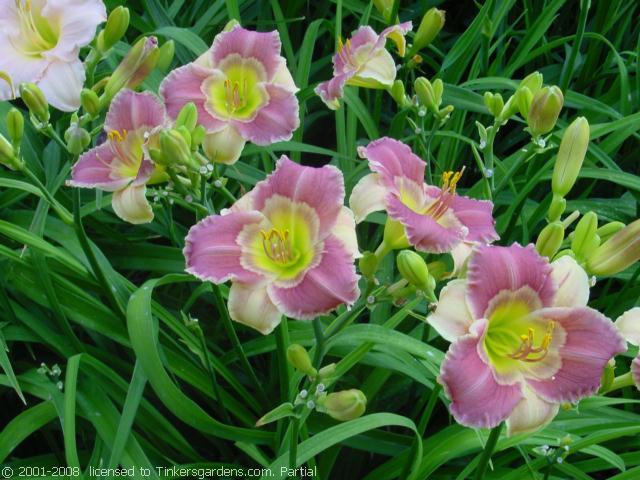
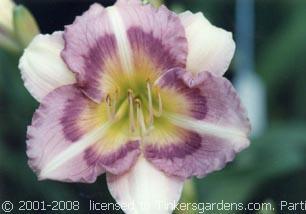
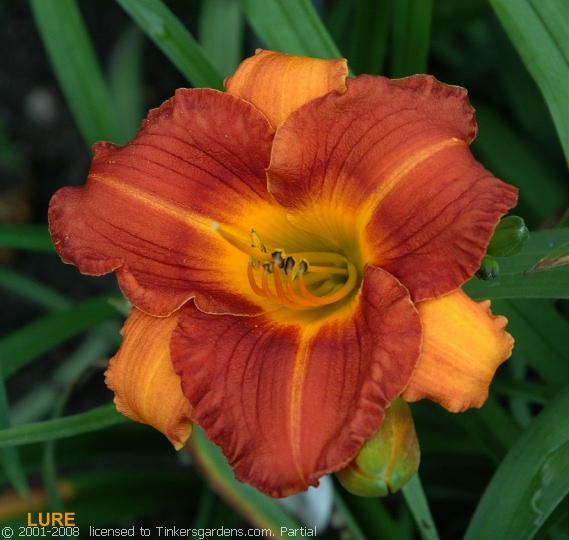
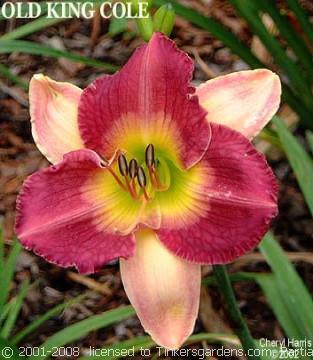
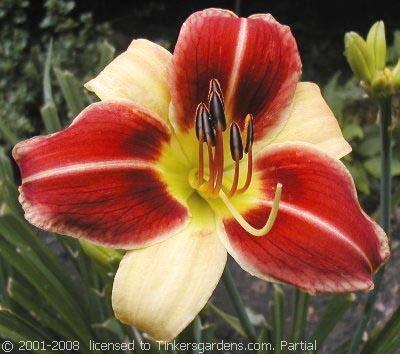
H. "George Jets On"
H. "Old King Cole"
H. "Indy Charmer"
H. "Lure"
H. "Ponca Brave"
Daylily Bicolors & Bitones
A bicolor daylily is described as a daylily's flower color whose petal segments are an entirely different color than its sepal segments. For more info and an example of a bicolor go HERE. Additionally, a bitonal daylily is a daylily's flower color whose petal segments are a different tint of the same color than its sepal segments. For more info and examples of a bitone go HERE.
A bicolor daylily is described as a daylily's flower color whose petal segments are an entirely different color than its sepal segments. For more info and an example of a bicolor go HERE. Additionally, a bitonal daylily is a daylily's flower color whose petal segments are a different tint of the same color than its sepal segments. For more info and examples of a bitone go HERE.
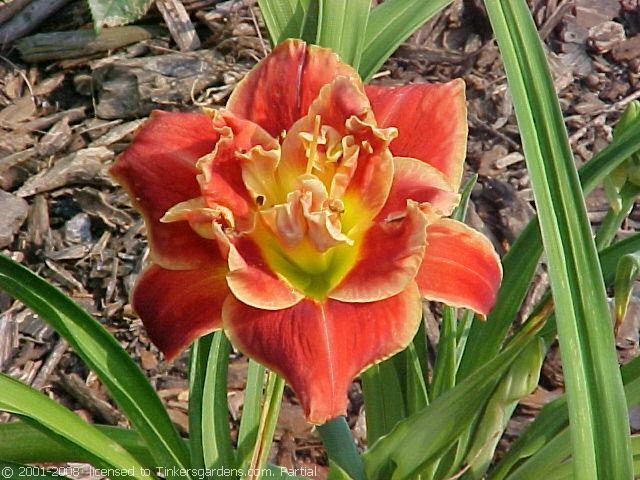
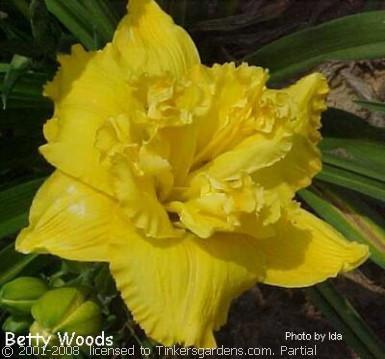
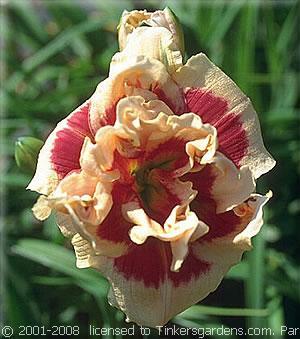
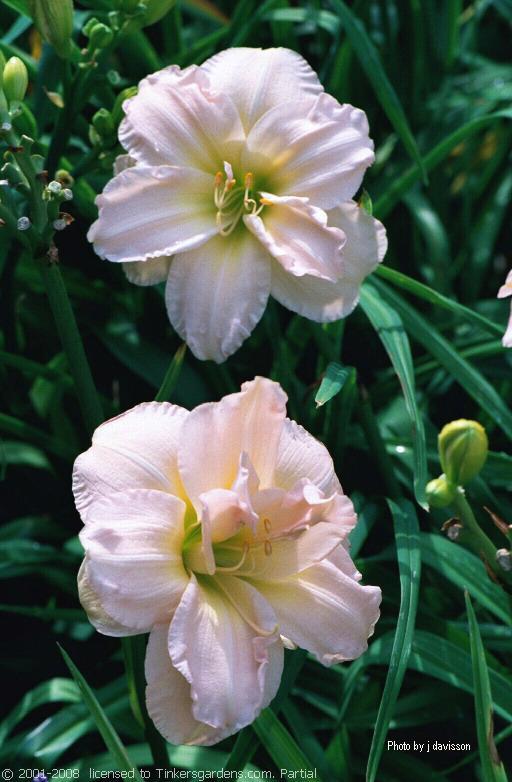
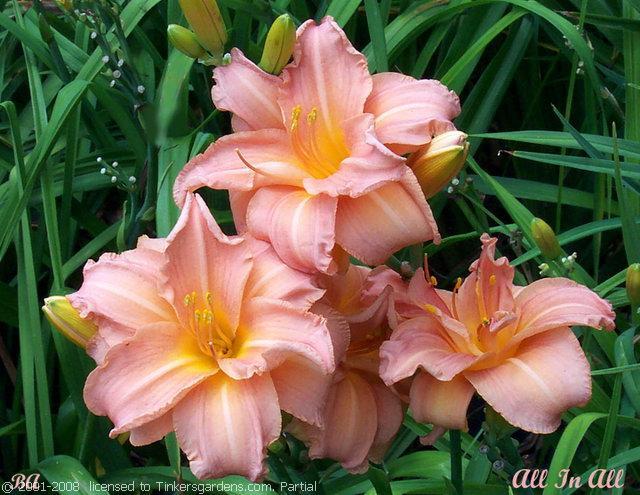
H. "Peggy Jeffcoat"
H. "Prince Of Tides"

H. "Betty Woods"
1991 Stout Silver Medal
1991 Stout Silver Medal
H. "Party Poper"
H. "All In All"
Daylily Doubles
A double form is a daylily flower with additional perianth segments set one inside another -hose in hose style, and/or stamens converted into petal-like structures -petaloids. For more info and examples on doubles click HERE.
A double form is a daylily flower with additional perianth segments set one inside another -hose in hose style, and/or stamens converted into petal-like structures -petaloids. For more info and examples on doubles click HERE.